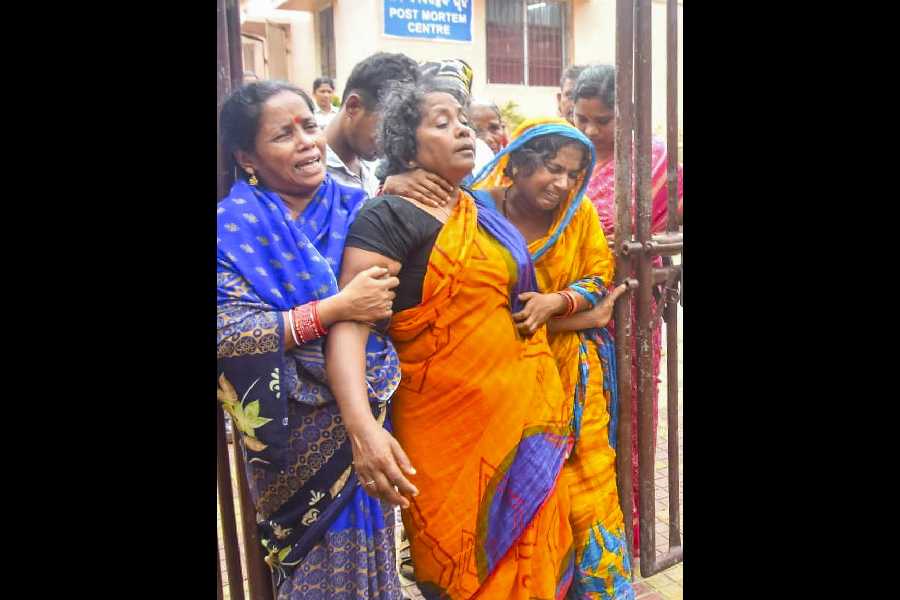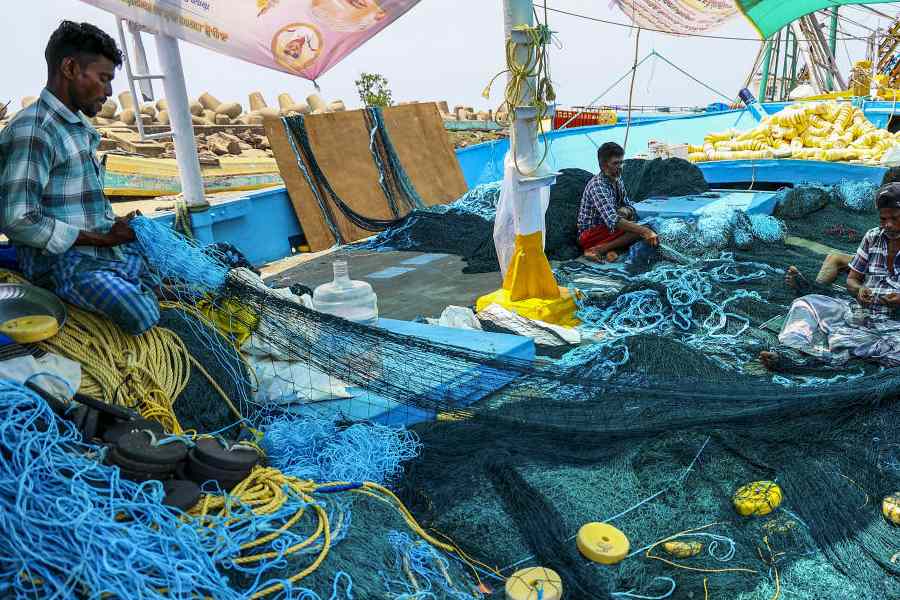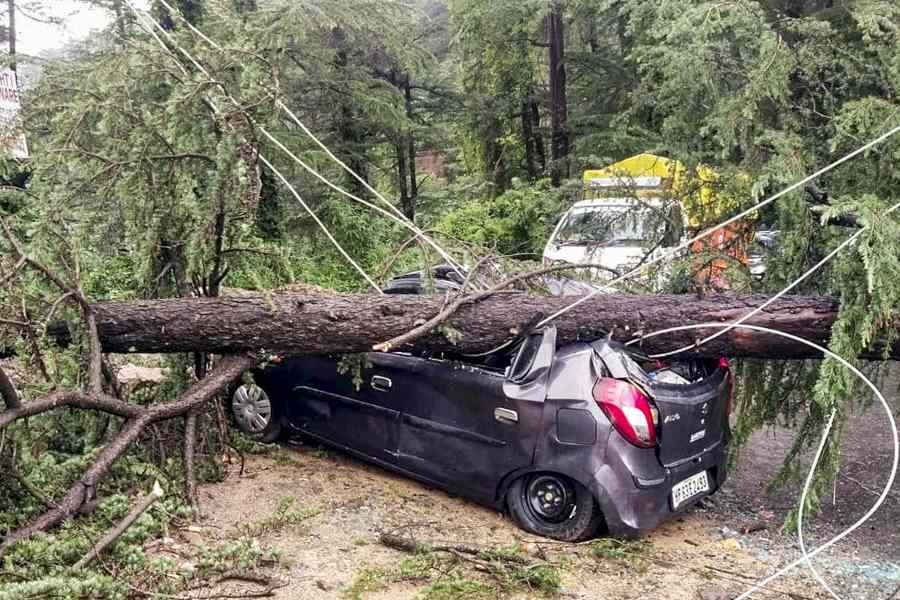 |
| Imaging: M. Iqbal Shaikh |
It will take several miracles to save Pakistan from Pakistan. Despite the February 18 (2008) elections and the retreat of the Pakistan Army from the civilian political landscape, Pakistan continues to battle multiple challenges to its sovereignty, identity and survival as a nation state.
The statistics of death and violence alone suffice to indicate the gravity of the situation. In 2007, for instance, there were 1,442 terrorist attacks and incidents of political and sectarian violence inside Pakistan, killing more than 3,000 persons as against 657 similar incidents in 2006 in which 907 persons were killed. These terrorist attacks killed 232 army men, 163 paramilitary soldiers and 71 policemen. Of the 60 suicide attacks, 41 were directed against security forces. These statistics indicate not only anger against the military but also the absence of fear among people. Of the 1,636 persons shown as arrested for terrorist activity, the largest component, 740, was from the restive province of Balochistan where, mostly unknown to the rest of the world, a fierce battle for independence is being fought by Baloch nationalists…
There is a very real fear in the ruling circles in Pakistan that a secular democratic India which is also economically successful would undermine the ideology of an Islamic Pakistan. The so-called jihad against the Soviets in Afghanistan and terrorism in India were the result of these warped policies. While the Soviets may have left, India could not be wished away. The result is that today Pakistan faces the danger of being consumed by its own creations — jihad abroad and the Taliban at home...
Like never before, Pakistan, a country of 160 million, today is in dire need of miracles — three, at the very least. The first miracle should be the US giving up its policy of mollycoddling dictators in Pakistan. The manner in which Pakistan was allowed to go nuclear, acquire warheads and trade in nuclear technologies by successive regimes …is a tragic testimony to the failure of the policies of these regimes or mindless pursuit of self-interest. And almost simultaneously, Pakistan was allowed, or even encouraged, to become jihadi. Pakistan’s hopelessly misconstrued policies have only converted most unemployed young people of Pakistan into terrorists who have now returned as unemployable (Pervez Musharraf once called them ‘freelancers’) jihadis to haunt their former masters. This now leaves the world petrified about having Islamist terrorists armed with nuclear weapons. The real and persistent danger is the undeniable fact that the State of Pakistan has systematically proliferated nuclear technology for decades.
The second miracle is to let al-Qaeda and the Taliban melt away from the tribal area. They are deeply entrenched in FATA (Federally Administered Tribal Areas) and actively working to expand their empire into NWFP (North West Frontier Province). Three of the seven districts of the Valley of Swat, Pakistan’s idyllic tourist spot, are under the thrall of Taliban forces. Attempts by Musharraf’s security forces to oust them have failed. There are fears that this new development marks the arrival of al-Qaeda outside FATA and represents the most potent threat to Pakistan’s security. It is not difficult to see how grave the problem has become through neglect and connivance. The Lal Masjid episode, which was followed by suicide attacks on Pakistan’s armed forces in Tarbela, Rawalpindi and Sargodha, indicates not only the ability of the terrorists to strike at will but also that they had inside intelligence…
Finally, as the third miracle, the Pakistani Army must tackle the growing terrorist threat within the country and yet it must retreat not just physically but metaphorically from the lives of the people of Pakistan. General Ashfaq Kiyani’s instruction to the army to pull back from civilian appointments is a beginning. But the military’s multi-billion-dollar corporate interests are far too large for it to pull out soon or completely. Unfortunately if neither the army nor the Taliban retreat, we are staring at an abyss as Pakistan is consumed by its own creations — jihad and the Taliban.
A comparison with India becomes essential here, not as a self-adulatory exercise but to act as a reference point. Sixty years after Independence, India and Pakistan are on different trajectories. India is a secular democracy — raucous and flawed — but democracy it is. After years of uncertainties, the fortune graph is now a steady upward curve as India positions itself to become a rising economic power. Pakistan, on the other hand, is on a downward slope... as its graph dips into a jihadi abyss. While the world applauds India, it increasingly looks at Pakistan with deep suspicion as an irresponsible state.
While the Indian leadership of the day set about giving its people a written Constitution, in Pakistan the twin pillars of governance have been the army and Islam. Punjabi feudalism too did not help matters. Over the years, this problem has only accentuated with the mullah, intolerant of any deviation, interpreting the Islamic tenets in a narrow sectarian sense that excludes women —half the country’s population — from equal treatment. He also seeks to exclude other sects from similar benefits, earthly or otherworldly. The army treats any adherence to alternative opinion as disobedience at best and treason most of the time. Equality and dissent are the essential ingredients of democracy, but Pakistan’s twin pillars discouraged both. In Pakistan, they shot dead veteran Baloch leader Akbar Bugti because he dared to ask for a better deal for his Baloch people. They also banished elected mainstream political leaders. In India, we allow secessionists to avail of the best possible medical treatment.
The truth is that the security establishment of Pakistan still treats India and its own nationalists as the biggest threat. Perennially fearful of India’s presence in Afghanistan, the Pakistani establishment not only feels that it needs the Taliban but also nurtures them just as it nurtured elements like the Punjabi Lashkare-e-Tayyaba. It cannot, therefore, be serious about curbing the Taliban…
The key question is that after having made defence and foreign policies so India specific, can Pakistan’s military rulers accept a situation where (a) Kashmir does not provide the army the raison d’être for their primacy; (b) strategic depth against India is no longer crucial, and (c) they can live with a secular, economically successful ‘Hindu’ India next door?
For then, the question will be, ‘Why Pakistan?’
What Pakistan needs today is not reinvention of the military regime. It needs a strong, fairly elected political leader who thinks of Pakistan first and realises that India is not a threat to Pakistan; a leader who accepts a secular successful India as an opportunity and not a threat. Unless the peoples’ movement acquires a totem pole soon, like the Myanmar students found Aung San Suu Kyi, and is backed by sustained international pressure, it will wilt and die under the jackboot. The February 18 election gave a fractured verdict and is likely, as rival political parties in the coalition struggle for supremacy, to end up as a political stalemate. That is what the army wanted, a fractured mandate that allowed it to retain control but go back to the barracks, refurbish and return after the politicians fail, as they inevitably would.











